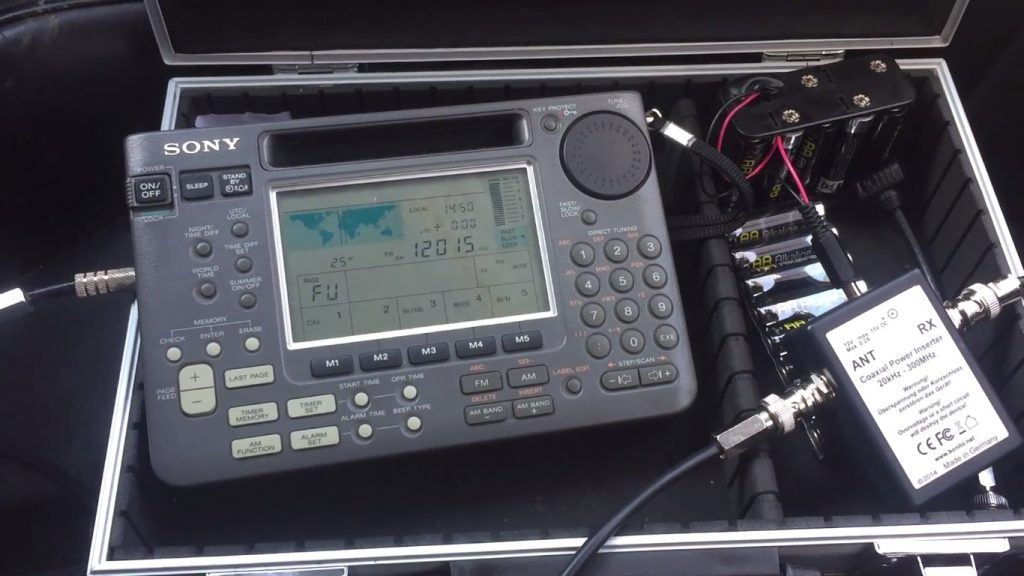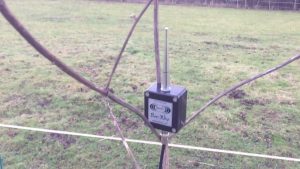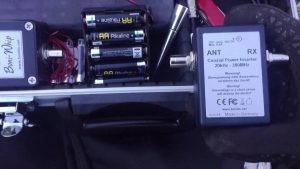Hi there, if you’re a subscriber to the Oxford Shortwave Log YouTube channel, you will be aware that I have been using a Wellbrook ALA1530 H field antenna, for 15 months or so, with (at times) excellent results. A while back I was on the lookout for a second antenna, however at more than £250, I couldn’t justify purchasing a second Wellbrook. Ultimately I splashed out on the Bonito Boni whip E-field wideband active antenna (20 kHz to 300 MHz) and with a very compact form-factor suitable for DXpeditions/portable operation in general, the Boni whip definitely ticked all the boxes. Furthermore, with reasonable second and third order intercept points of +55 and +32.5 dBm respectively, the Boni whip, on paper at least, looked like a pretty good buy at around £100.
Initial testing at home confirmed, perhaps not surprisingly that the Boni whip could not match the SNR provided by the Wellbrook ALA1530 in a noisy, urban environment. However, less predictably, the Boni whip has proven to be a truly excellent antenna away from the ubiquitous blanket of ‘electrosmog’ at my QTH. Furthermore, it really is so compact, I simply leave it in the car in a small flight case, with a portable and connectors etc. for ad-hoc listening sessions. Since returning from my most recent trip to Brazil, I have had a chance to review my most recent catches with the Boni whip, some of which are realy pleasing and most definitely underline the excellent performance of this diminutive antenna. In particular, signals from Radio RB2 on 11935 kHz and Radio Aparecida on 11855 kHz, both low power Brazilian stations, are testament to how sensitive the Boni whip is in an electrically quiet environment. Check out also the quality of longwave signals from Poland and the Czech Republic – simply amazing for such a physically short antenna. Finally, there’s a personal first from Lusaka, Zambia, Voice of Hope Africa on 13680 kHz. All the more rewarding that this was actually copied in my work office!
I hope you found this article interesting. There are embedded reception videos below and text links for all, which will take you directly to the relevant video on the Oxford Shortwave Log YouTube channel. Thank you for reading/watching/listening and I wish you all excellent DX!
Click here to watch on YouTube
Click here to watch on YouTube
Click here to watch on YouTube
Click here to watch on YouTube
Click here to watch on YouTube
Click here to watch on YouTube
Click here to watch on YouTube
Click here to watch on YouTube
Clint Gouveia is the author of this post and a regular contributor to the SWLing Post. Clint actively publishes videos of his shortwave radio excursions on his YouTube channel: Oxford Shortwave Log. Clint is based in Oxfordshire, England.




I do not question the quality of the Bonito whips since I do not know that yet, but I question Bonito, the company itself. I’ve twice tried to contact them asking for more clarification regarding their whip’s abilities for VHF/UHF. I sent one enquiry via their web form and one via email. No response!!
(So for now) I think they don’t like to talk about this at all and it does not bode well when a company ignores potential customers like this. One star for customer support. Eventually, I want to use a Bonito whip for shortwave primarily, but also for other bands so my questions below is relevant for a product claiming to cover these band.
2’nd attempt, email sent 2017-03-15, no feedback what so ever.
Hi,
I am seriously considering buying a Boni Whip. I have already sent you a question via your web page, but it is seems that you do not check this very often so I try again via email this time.
Will the Boni Whip be any good for receiving airband, 2m band and Marine communication on VHF? I know it covers 20 kHz to 300 Mhz, but how good is it really on VHF compared to a standard 1/4 wave whip or a dipole for the respective bands? I need to be sure the antenna is at least as good as a standard 1/4 wave or a dipole on these bands. Eventually, I will use this antenna for monitoring airborne beacons on MF(!) and 30m, plus for portable balloon tracking on APRS in the 2 meter band, so that’s why I am asking. If this antenna also works fine on the VHF bands, it is really a much simpler way for me than using separate antennas for each band.
Eventually, can I please also order the Boni whip without it’s vulnerable standard power feed unit and get it replaced it with the better CPI1000?
If positive to the questions above, here is what I want to order:
1 Boni Whip with the CPI1000 (not it’s original power feed unit).
1 Pole mount bracket 28m
1 Galvanic Antenna Isolator GI300
25 meters H155 Low-Loss coax cable pre-fabricated with BNC’s
Best regards
Geir, LA6LU
Thank you James. There must be an issue with your computer – I have just tested all the videos – both embedded and the text links and all are working properly. Perhaps try re-booting? 73, Clint
Very good however when I clicked on to watch videos nothing showed up.
Hello Clint,
Thank you for the nice test. I would be very happy if I could have it on the Bonito Newsroom as well. Feel free to contact me.
Dennis
Hello Dennis, my pleasure. Please feel free to put this on the Bonito Newsroom, just let me have a link so I can take a look! You can contact me via email or through my YouTube channel Oxford Shortwave Log. 73! Clint
Thomas …
This was a superb piece … my compliments to the author. In fact, I’m going to order one of these babies this week – just because of this (hope he gets a commission … lol…).
Seriously, not sure how you keep doing this, but you find ways to keep me interested with a wonderful mix of content here.
Well done, my friend!
I agree, Bill–Clint did a fine job, indeed!
You touch on something very meaningful to me: the SWLing Post is all about the amazing contributors!
Cheers,
Thomas